The Corsair H150i Elite Capellix AIO Cooler Review: Go Big Or Go Home
by E. Fylladitakis on October 15, 2020 9:30 AM EST- Posted in
- Cases/Cooling/PSUs
- Corsair
- Water Cooling
- Liquid Cooling
- RGB
- iCUE
The Corsair H150i Elite Capellix Liquid Cooler
At first sight, Corsair’s latest liquid cooler looks deceptively simple. Its massive proportions certainly are inspiring but the simplistic appearance does not hint at how advanced this cooler is. At a high level, the design is based on the standard AIO configuration of a single radiator, two hoses, and a single block that combines the copper CPU contact plate with a mini liquid pump. Corsair went with thick-walled FEP (Fluorinated Ethylene Propylene) tubing with nylon sleeve braiding instead of the usual stiff corrugated tubing, which is more flexible and aesthetically superior.
The massive 400 mm long radiator requires a case designed to hold three 120 mm fans in the row, yet also with enough clearance to fit the extra mass of the radiator itself. It is 27 mm thick, requiring a clearance of 55 mm with the fans installed in order to fit inside a system. Size aside, the radiator is the typical dual-pass cross-flow design with tiny fins soldered on thin oblong tubes, as the vast majority of AIO cooler radiators are. Due to its thickness, the radiator’s airflow resistance is low and clearly designed to perform with very little air pressure.
The main block assembly of the H150i Elite Capellix initially appears unrefined – however, the octagonal body hides a record number of thirty-three fully programmable RGB LEDs and the top plate is removable, providing extra flexibility to users. Corsair includes two top plates in the bundle, one darker and one brighter, but the relatively simple shape of the top cover allows for very easy customization if someone has access to a 3D printer or CNC. The block is powered via the Commander CORE module and has a 3-pin motherboard connector that serves only as a tachometer for speed/health monitoring.
The octagonal copper contact plate is attached to the base of the block with eight screws. Although it is not machined to a perfect mirror finish, it is very smooth and perfectly flat, which is what matters for good thermal performance. Thermal material is pre-applied to it.
Once everything is properly connected and powered, the H150i Elite Capellix becomes a canvas full of colors. The LEDs are controlled by the Commander CORE interface and lighting effects are programmable via Corsair's iCUE software. It is the presence of the Commander CORE module that makes the new H150i Elite Capellix so much more flexible than previous versions of the cooler – when combined with the now highly advanced iCUE software, the number of programming options are endless.
For example, users can stick with basic lighting effects that are purely aesthetic or program practical indicative lighting effects and/or reactions, such as temperature-dependent colors, alarms, and more. Additionally, the Commander CORE module paired with the iCUE software offers a complete synergy between all compatible Corsair devices, allowing inter-device manipulation and commands. For example, users could very well turn the Function row of a compatible keyboard into a lighting bar that indicates the RPM % of the cooler’s fans or change the cooler’s lighting colors based on which mouse profile is currently active.


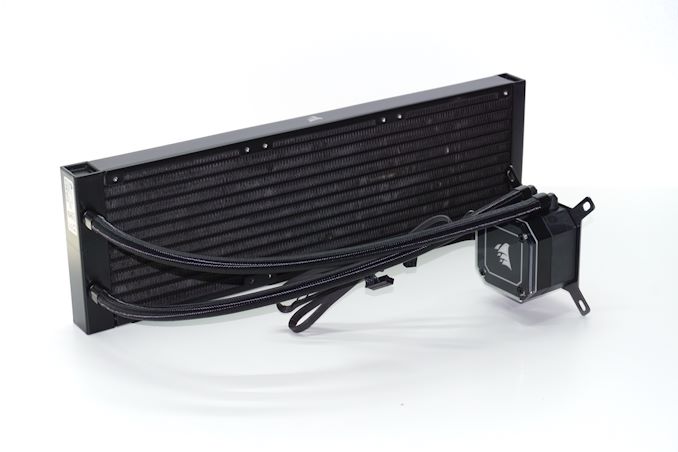
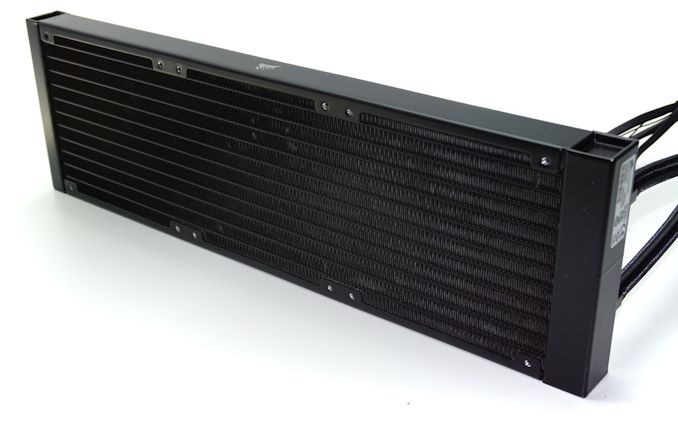
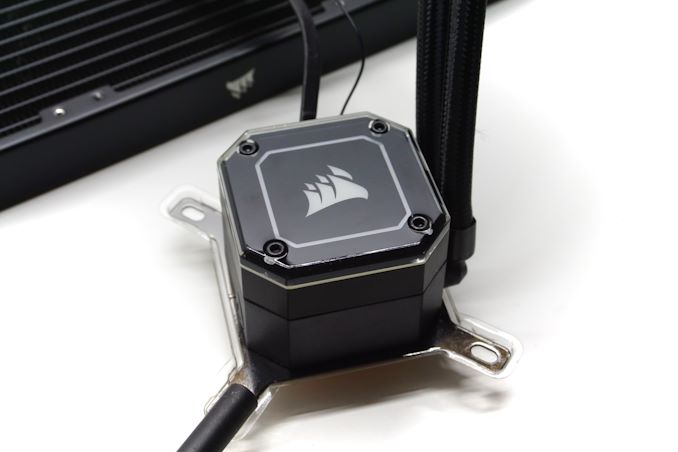
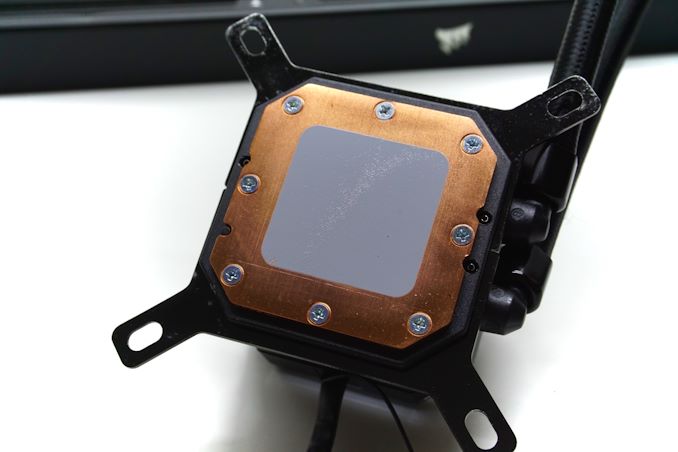
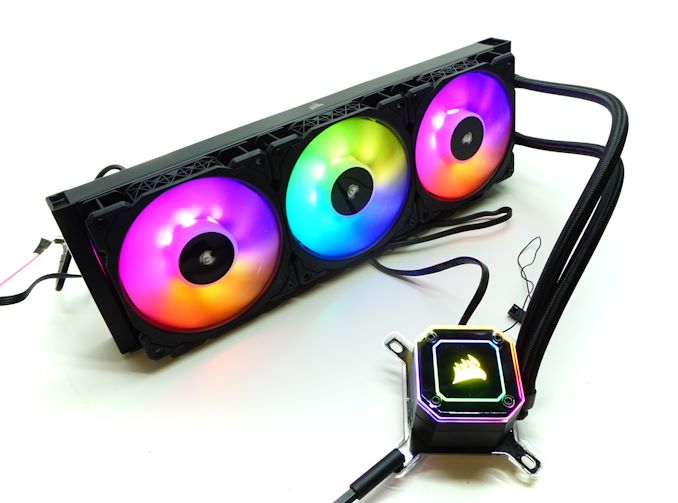





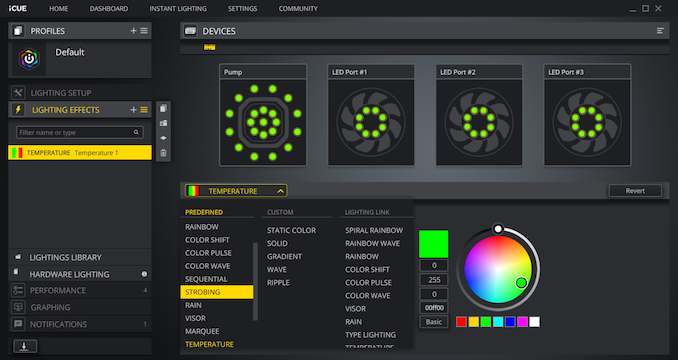








37 Comments
View All Comments
hehatemeXX - Thursday, October 15, 2020 - link
So new fans.. I wonder if we replaced these fans across the board if they are all the same?Makaveli - Thursday, October 15, 2020 - link
Looks good but those fans and that controller add alot of wires and abit of a mess compared to earlier version of this product that come with non LED fans but progress I guess.DanNeely - Thursday, October 15, 2020 - link
If you can crank the brightness of the frag harder disco lights up high enough I guess the cable management debacle the bring can be hidden in the shadows.Makaveli - Thursday, October 15, 2020 - link
lol so blind yourself so you can't see the wires got it :)eek2121 - Thursday, October 15, 2020 - link
That was always the issue with the corsair stuff. We are long overdue for an overhaul of connectivity standards. 3-pin/4-pin fan connectors should be replaced with a 6-pin connector of the same time and the minimum power spec provided by the motherboard should be raised to 12V @ 1.5 amps.Tomatotech - Friday, October 16, 2020 - link
Install a Bluetooth / WiFi fan control? Low power Bluetooth probably better here, and would eliminate a few control wires. WiFi would let you monitor your pc thermals remotely from your phone while doing a long job (without needing to learn how to do a remote login from phone). Even a proprietary radio (like Logitech’s mouse / keyboard dongle) would be mostly fine if a bit annoying.YB1064 - Thursday, October 15, 2020 - link
A few LEDs distinguish this from the competition. Can't do much more with AIO I suppose.eek2121 - Thursday, October 15, 2020 - link
There is nothing wrong with a quality AIO. My NZXT 280mm is whisper quiet and keeps my 3900X in the 60s (70s when video encoding or rendering) The only noise I hear coming from the PC is the GPU.Beaver M. - Friday, October 16, 2020 - link
I highly doubt that yours is whisper quiet. Everyone ever who claimed that to me was proven wrong when I listed to it myself. The pump always adds a very annoying noise.My air cooled PC is really silent. The loudest part is my external 2.5" HDD, which I always turn off when I dont need it, because, even if its quiet for guys like you, its extremely annoying with a silent PC like mine.
But I get that a lot of people think loud components are quiet, because they have bad hearing and additionally wear headsets on their PC, which probably is the cause of bad hearing anyway.
29a - Friday, October 16, 2020 - link
"My air cooled PC is really silent."I highly doubt that yours is really silent. Everyone ever who claimed that to me was proven wrong when I listed to it myself.